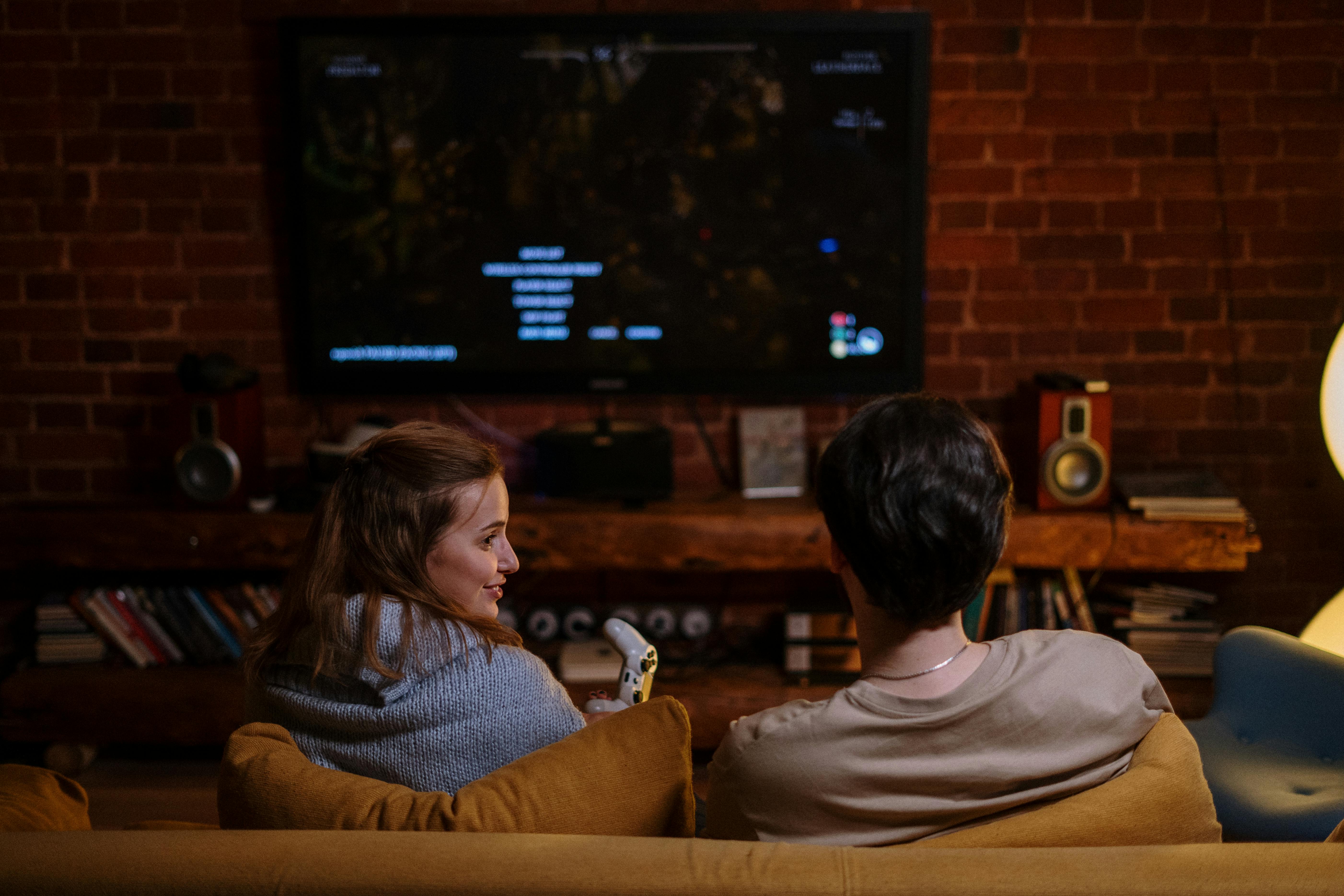
So what’s the problem people run into when they try to game on the couch? The number one issue is comfort. Long sessions mean your back starts hurting, your neck gets sore from looking down, and your hands, wrists, and arms can ache from the weight of the device. Then there’s the room itself: noise from other people, and privacy — everyone can see what you’re playing and hear it. Heat is a big deal, especially with laptops, because the underside gets hot. If you’re not on a laptop, you’re usually stuck with a smaller screen. That’s fine for some games, but a lot of PC titles aren’t designed for a tiny display. And there’s the general weight of the device and how you support it. These are all real problems, and good solutions can feel hard to find.
Most people grab a laptop, prop it up on their lap, and pair an Xbox or PlayStation controller. That works — but there’s a better way that solves these issues and gives you a much better couch gaming experience.
TL;DR: The “Couch Console” Build
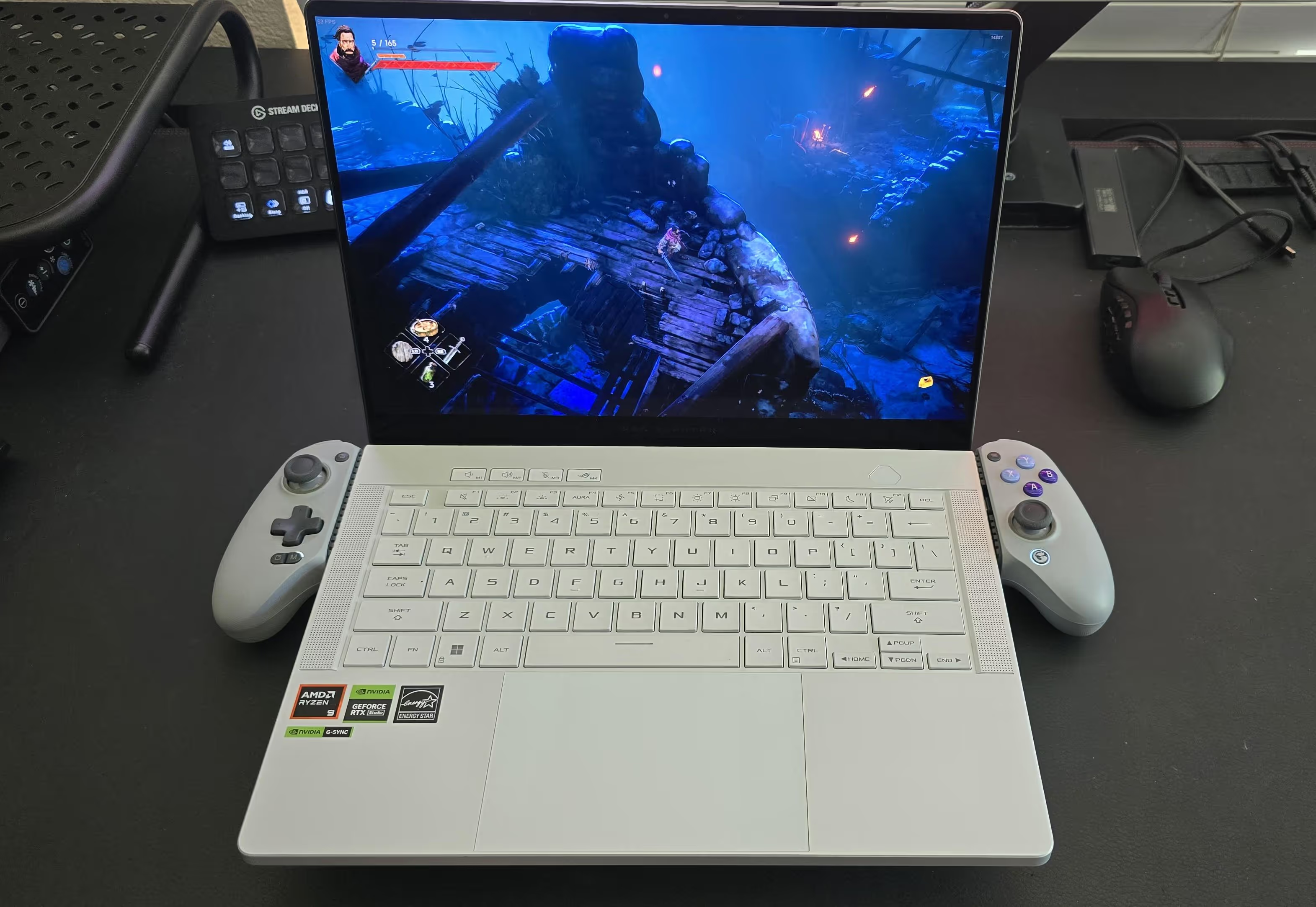
The first step is a controller extension mod made for a 14-inch laptop. Let’s start with the laptop itself. The 14-inch size matters because it fits the controller extension better, and the weight is more manageable — especially if you pick a lightweight machine. If it’s actually light, it won’t weigh much more than some of the thicker, heavier handheld gaming devices.
The only negative is weight distribution: the screen can make it want to pull back a bit. But once you get used to it, it’s 100% comfortable. I love it, and it’s how I play the majority of my games. I’d still pick a 14-inch laptop. The controller extension can fit a 16-inch, but those are heavier, and I wouldn’t want to stretch the springs that far.
You can also use a tablet with a game-streaming client like Sunshine and Moonlight to stream from your desktop to the tablet. That’s its own topic, though. For this piece, I’m focused on playing locally on the device.
For local play, I recommend a 14-inch gaming laptop that can run your games right there — ideally all the games you actually want to play. Now let’s talk about two solid picks.
The ASUS Zephyrus G14 is a great pick for a handheld-style setup. You can get it with an RTX 5060 or 5070 Ti laptop GPU, or go with last year’s edition with a 4060 or 4070. All of these are capable of running the majority of games you’ll play on the couch.
Battery life is excellent, and the G14 has both an iGPU and a dedicated GPU. Here’s why that matters: on battery, you want the most efficient hardware — the GPU built into the CPU. These have a very good AMD APU, so the integrated GPU lets you play at about the same level as — or better than — a Steam Deck. With the newest version, you’re looking at roughly 30–40% better performance than the Steam Deck.
When you want to run more demanding games, just plug into the wall and unlock the dedicated GPU. At the high end, that’s an NVIDIA RTX 5070 Ti. With that, you can play modern AAA games at the highest settings, high frame rates, and at the resolutions you’d want for a handheld-style device. Best of both worlds: long sessions on the iGPU, and the top-end experience on the dGPU.
You’re also getting an OLED screen. Around 500 nits of brightness is solid and delivers an awesome visual experience that actually does justice to the hardware. The most important part of your experience is what you see and interact with. And the speakers are excellent for Windows — the best on a Windows laptop, second only to the MacBook Pro, which has amazing speakers.
If you want something cheaper and don’t need a dedicated GPU, the Lenovo Yoga 9i 2-in-1 Aura Edition is a strong option. It only has an integrated GPU with the Intel CPU, but it can run games about 30–40% faster than the Steam Deck and roughly on par with the new handhelds coming out this year.
You also get a 14-inch display that can hit 1100 nits with a 120 Hz refresh rate — easily one of the best screens on a 14-inch laptop. If you’re mainly playing lighter games, watching movies, and doing other tasks, this might be the best laptop for you. It’s definitely one of my favorites.
If you already have a device that would work for this, than you already steps ahead, and the following devices may make it easier for you.
How it ties in:
Editor’s picks:
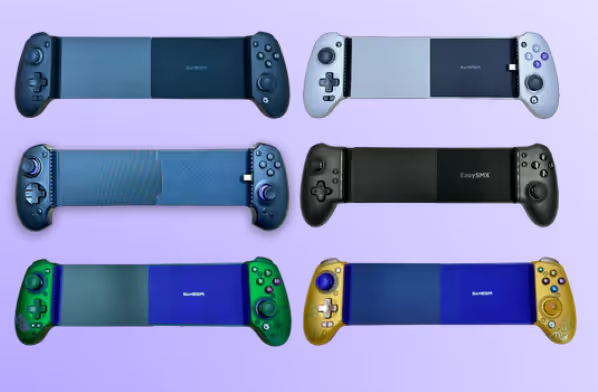
The device that makes this possible is the GameSir G8 Plus extension controller, sold by RRTronics. It lets you attach a full-on, Xbox-like controller to the keyboard deck of your 14-inch laptop. It can stretch to a 16-inch laptop as well — that’s possible, but I wouldn’t recommend it.
You can also use this with an 11-inch iPad, a 13-inch iPad, an 11-inch tablet, or the 14.6-inch Samsung Galaxy Ultra tablets. It fits all your devices.
There are two versions: a USB-C model and a Bluetooth model. I have both, and I like the Bluetooth version — it’s newer and has better haptics. The controller includes two mappable buttons on the back. Battery life is solid: if you’re using it all day, it’ll cover about a day’s worth of playing — roughly eight hours, depending on your haptic vibration level (which is adjustable).
Once you attach it to the laptop, it feels like you’re holding one device. It gives the laptop a true handheld-console vibe, which is a unique, satisfying way to play — especially when you’re holding a powerful 14-inch machine close to your body, the same way you would with a Nintendo Switch or a Steam Deck.
If you want a normal controller, these are the ones I like the most:
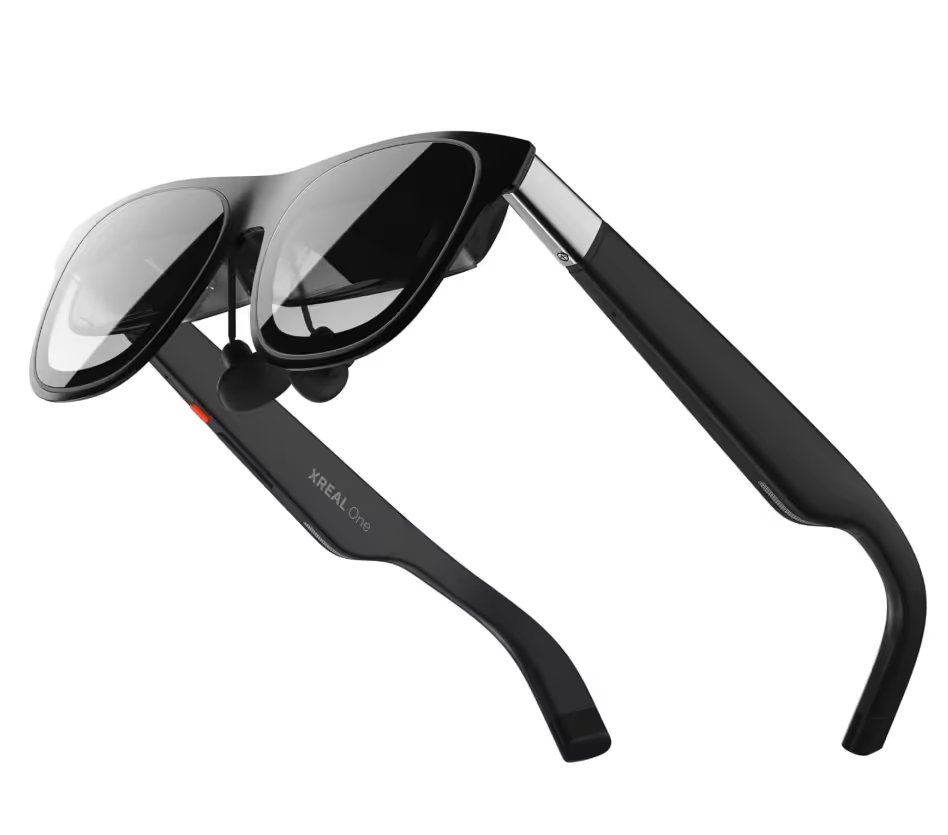
The next device is for when you don’t want to hold a large device in your hands while you’re laying on the couch. This is my favorite product that I’ve purchased, and it’s one of the most comfortable options on this list. There are two products here, but the one I typically recommend is the Xreal One AR glasses.
These AR glasses are advertised as giving you a 147-inch screen at about 10 feet away. They use micro-OLED with a 120 Hz refresh rate. You’re basically putting a TV in your glasses and then putting that on your face. It’s effective, and the picture quality is good for watching media and playing video games. If you have to read a lot of text, like a document, the edges can be a little blurry. For gaming, that’s not an issue — it looks great and feels great.
This newer model has three degrees of freedom built into the glasses, which is a big upgrade. The previous devices didn’t have this chip, so when you moved your head, the screen moved with you and everything felt locked to your head. That could get a little nauseating and uncomfortable until you got used to it. With these new ones, you can lock the screen in a single location and move your head around while the screen stays put. Much more comfortable than the older versions.
Because it’s a micro-OLED display, you get perfect blacks and great highlights, per pixel. That’s the best. I can’t play games any other way anymore after playing on OLED — it makes the game look so good. It also makes all the money you spent on your hardware feel even more justified and worth it.
Editor’s picks (add links):
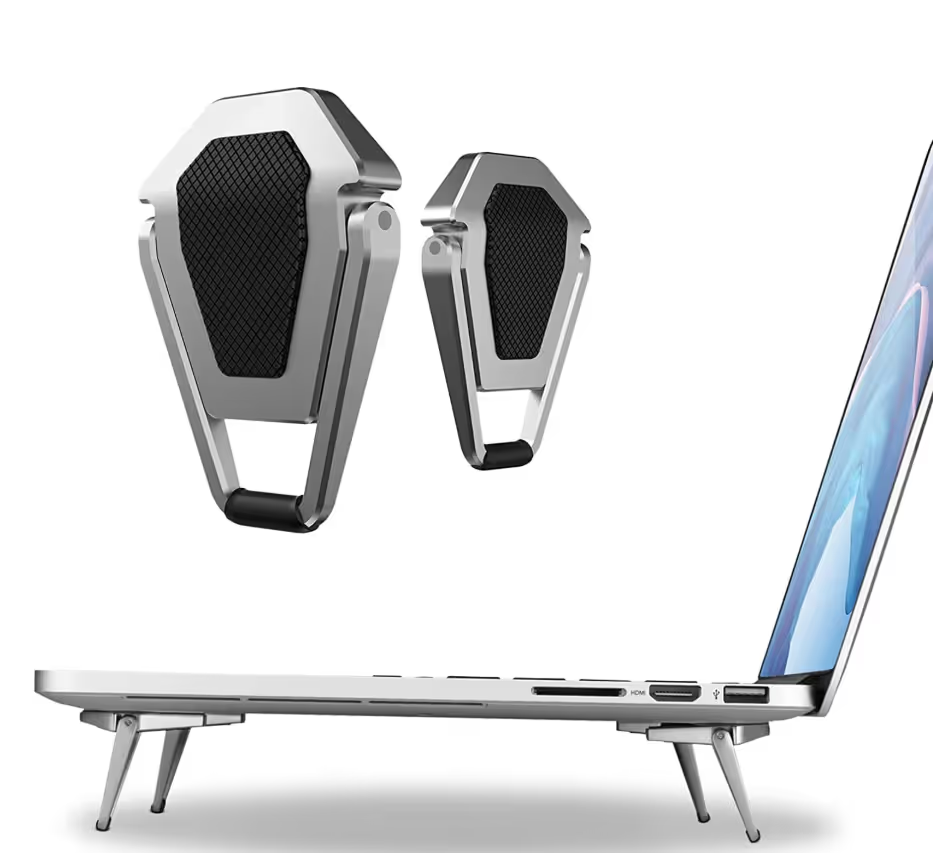
If you want to use a mouse and keyboard with your laptop, there are a couple of accessories that make the experience a lot more comfortable. There are two I’d get for the input setup, and then a third for audio.
A lap desk lets you sit on the couch with two cushions on either side of you and a platform on top. Plenty of companies make versions of this, and I’ll list the one I recommend, but the idea is simple: you put your laptop on the platform, your mouse on the side, and you can play like you would at a desktop — except you’re relaxing on the couch.
Couchmaster CYCON³ HORIZONLIGHT Bar
If you want the laptop directly on your lap, use small kickstand feet to prevent overheating. They’re two little stands you attach to either side of the laptop. Flip them out, rest the laptop on your knees, and you get full airflow for the vents underneath.
For audio on the couch — especially in a living room where other people are around — you don’t want to hear what they’re doing, and they don’t want to hear your game. I recommend earbuds. You can use any you already have: Sony, Apple, or Samsung — all excellent.
What I specifically recommend is the Audeze Maxwell. It’s one of the only — if not the only — planar magnetic Bluetooth gaming headsets with a built-in microphone. I don’t think you’ll get a better auditory experience from a gaming headset than this one. It’s my personal favorite, and I keep coming back to this headset and this company time and time again. They’re a great company, they stand behind their products, and they’ll support you if the headphones go bad or you run into any other difficulty.
For AAA gaming, plug in. Tuck a flat‑plug surge protector under the couch, route a right‑angle USB‑C or the stock barrel charger up through the cushions, and you’ll be able to play everytime you sit down at the couch. The key is to have it ready before you want or need to use it. USB‑C PD is great for light sessions and travel; the stock adapter usually delivers higher sustained performance for more demanding AAA games.
It’s 100% possible to have an enjoyable gaming experience on the couch. It’s a great way to play, especially after a long day or if you just prefer the couch over a desk — and you still want your PC as your main gaming device instead of a console. These are the products I recommend, and they’re what make it possible to play comfortably on the couch with a laptop.
